Bible Archaeology in Israel
There are so many reasons to visit Israel - to sun yourself on sandy beaches, next to the Mediterranean Sea, to hike in the lush greenery of the Galilee and Golan Heights, to explore the still and beautiful Negev desert, and, of course, to visit Jerusalem, arguably the world’s most important city, because of its significance to three major world religions.
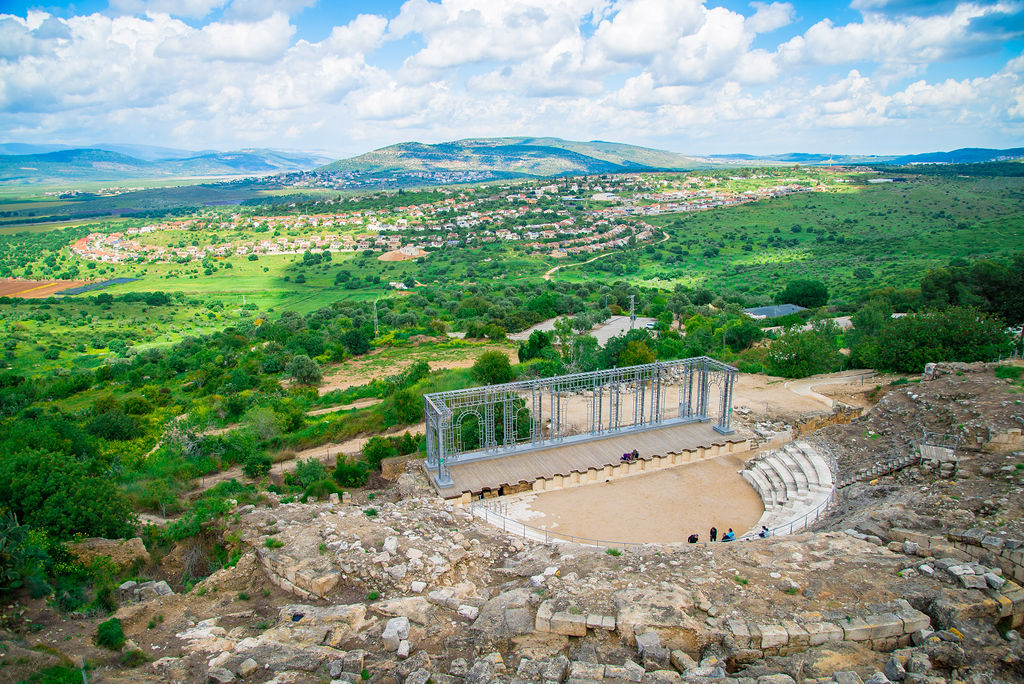
The Tsipori National Park, Israel. Photo credit: © Manu Grinspan. Published with permission of the Israel Nature and Parks Authority
There’s also the foodie scene (which has really taken Tel Aviv by storm), the museums (especially the world-famous Israel Museum) arts and culture (in the form of small galleries, opera, and modern dance), and music (think pop concerts in the theater of Caesarea, Israeli folk music at Sultan’s Pool in Jerusalem or jazz at the annual Red Sea Jazz Festival).
But there’s also another reason people show up - their fascination with the history and archaeology of a country that is thousands of years old and, over the ages, has been conquered and ruled by a slew of leaders. When you travel around Israel, you only have to throw a stone to find a site that dates back to the reign of Kings like Herod and Solomon. And that, in part, is how biblical archaeology sprung up in Israel.
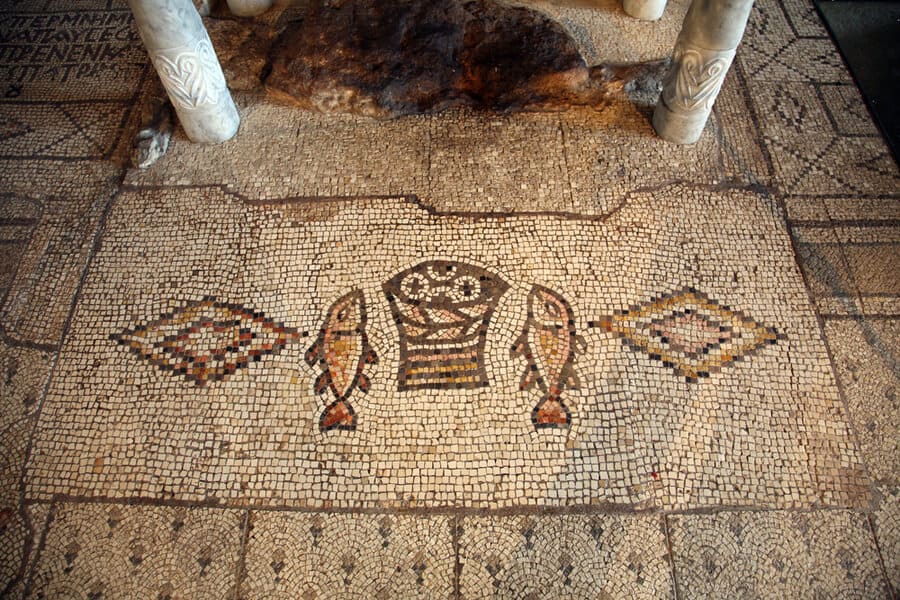
Mosaic floors at the Church of the Multiplication of the Loaves and Fishes at Tabgha, Israel. Photo credit: © Shutterstock
What is Bible Archaeology?
Essentially, biblical archaeology is an academic school of thought that deals with Levantine archaeology and biblical studies combined. These sites are all over the Ancient Near East but, in particular, in Israel (which was also known as Palestine, the Holy Land, and Canaan, at different periods). Why is it so important, you might ask?
Well, because it can provide insights where biblical historiography can't. Looking at archaeological discoveries, in combination with biblical texts, is an excellent means by which to gain a better understanding of Ancient Near Eastern peoples and their cultures. Moreover, compared with other Mediterranean countries, Israel has a much higher concentration of archaeological sites, in a smaller area.
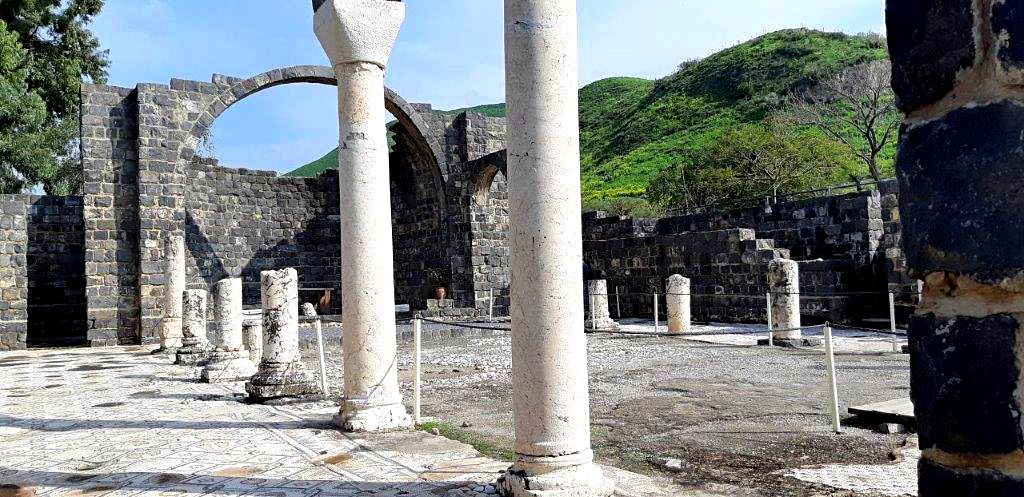
Kursi National Park, Israel. Photo credit: © Sarit Palachi Miara. Published with permission of the Israel Nature and Parks Authority
There are estimated to be around 25,000 archaeological sites in a country of just 22,145 square meters. Jewish history began with the patriarchs - Abraham, Isaac, and Jacob - and these finds show how deep the connection was between Jews and the Land of Israel. Of course, many other peoples ruled here too and excavations indicate just how many of them left a huge imprint on the country.
The fact is that nothing helps us better understand the lives of the people who inhabited this land - after all archaeology helps us all gain a better idea of where we came from. Biblical archaeology goes one step further - the artifacts that have been found here in the Holy Land let us piece together the lifestyle of the Jews who lived here many years ago, as well as supporting the historical accuracy of the Hebrew Bible.
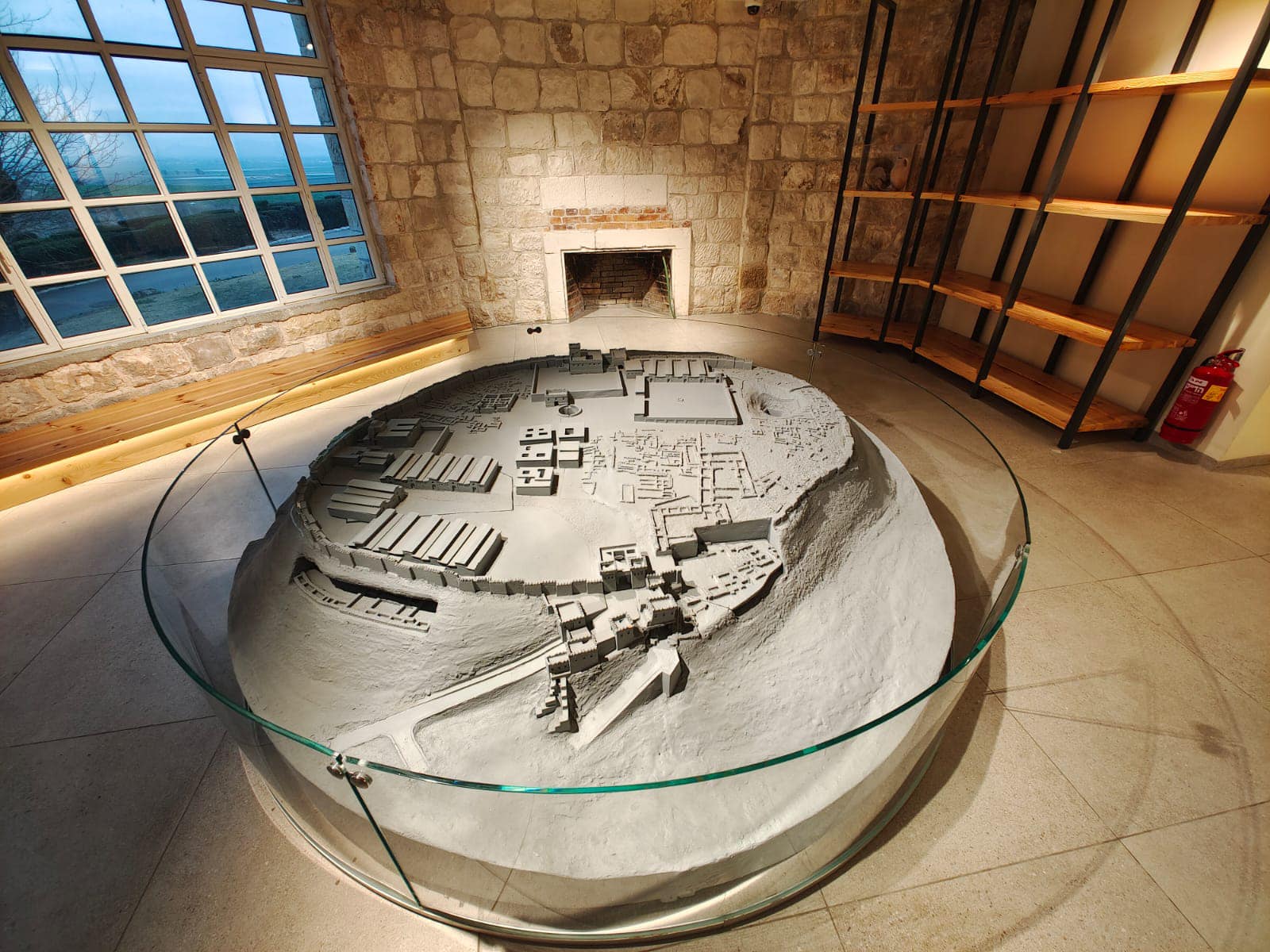
Model of Israelite Megiddo (in the Tel Megiddo Museum), Israel. Photo credit: © Dmitry Mishin
The History and Stages of Biblical ArchaeologyBiblical archaeology began in the 19th century when European explorers began arriving in Ottoman-controlled Palestine. Here are just four examples of the many archaeological sites discovered in Israel, over the years.
Biblical Archaeology Before the British Mandate (pre-1917)
A fantastic find, in 1867, Hezekiah’s tunnel was discovered close to the Temple Mount in Jerusalem, by Charles Warren. Constructed circa the 8th century, it was used to transport water from the Gihon Spring to inside the city walls. An inscription on the wall indicates that the tunnel was dug by men with axes, who started at opposite ends and met in the middle!
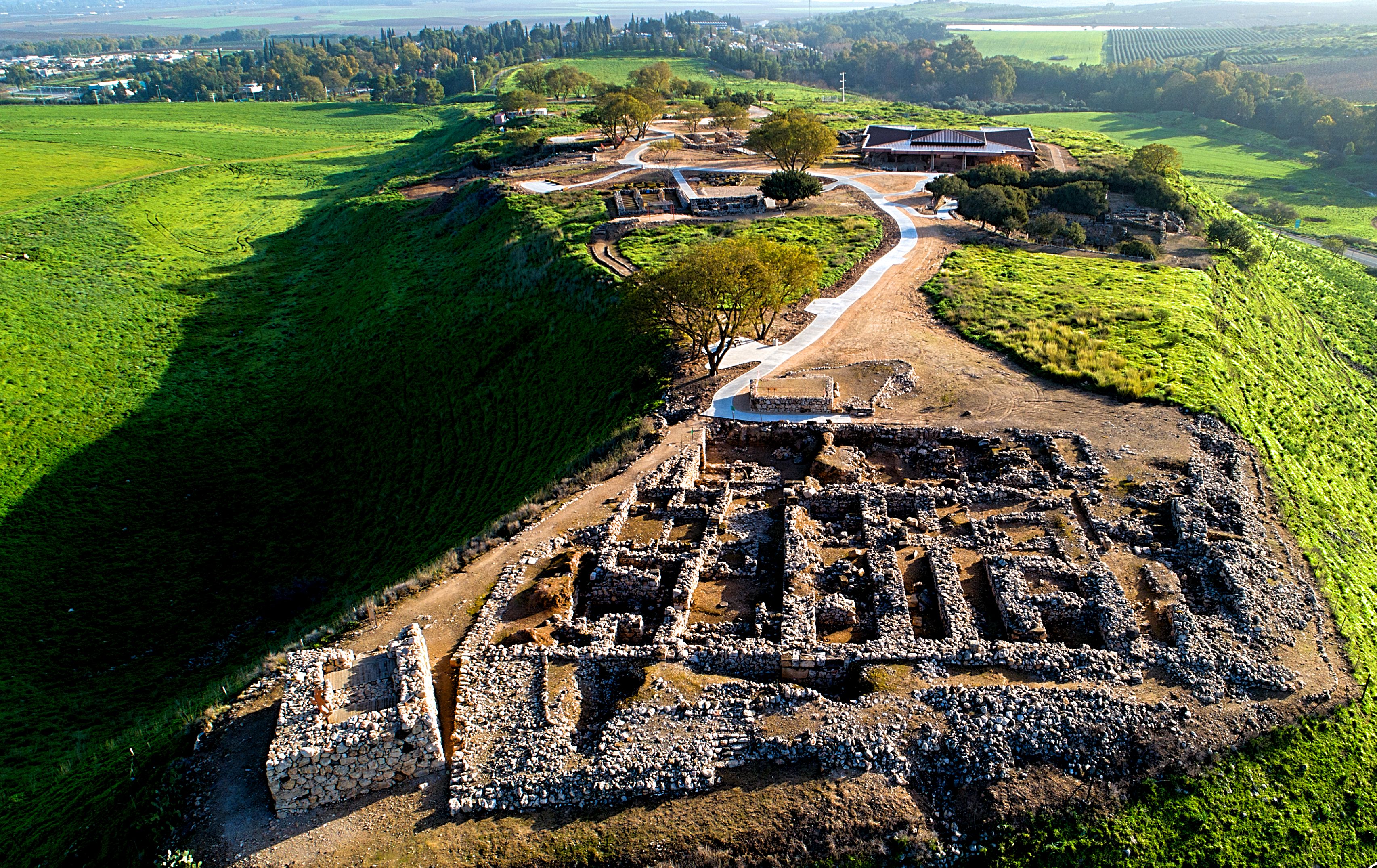
Tel Hazor National Park, Israel. Photo credit: © Yuval Gassar. Published with permission of the Israel Nature and Parks Authority
Biblical Archaeology During the British Mandate (1917-1948)Arguably the find of the century, it was at Qumran, close to the Dead Sea, where a shepherd boy wandered into a cave and stumbled upon what we now know to be the Dead Sea Scrolls. Around two thousand years old (from 3 BCE to 1 CE) and offer insight not just into the Essene sect, who lived at Qumran, but also the wider rituals and belief system of the Jewish people in ancient times.
Biblical Archaeology After the British Mandate (1948 onwards)
After the Six-Day War in 1967, when Israel recaptured the Old City of Jerusalem, British archaeologist Kathleen Kenyon led a series of excavations of Jericho and the Ophel Ridge and Mount Zion in Jerusalem where she found grains in jars, broken walls, pottery shards, and destroyed towers. She not only discovered the true age of Jericho but also, controversially, proved that the Battle of Jericho (and the city’s downfall) could not have happened exactly as the Bible says.
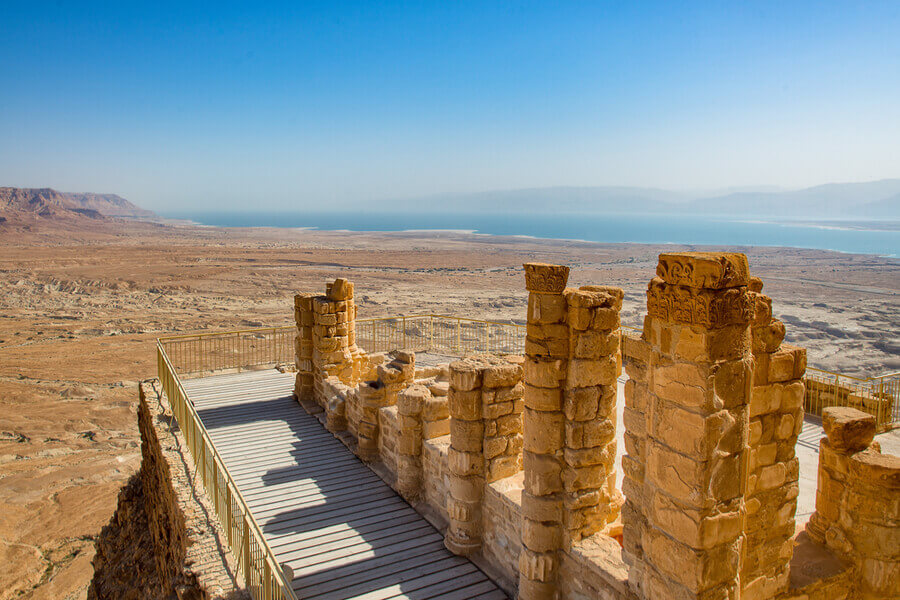
Masada ruins near the Dead Sea, Israel. Photo credit: © Shutterstock
Modern, 21st-Century
One of the latest archaeological findings in Israel was made just last year, in 2021. Archaeologists working at the City of David discovered an ancient wall, five meters wide, proving that the biblical accounts of Jerusalem being fortified were indeed correct. Today, there are more or less two different schools of thought when it comes to biblical archaeology - minimalism and maximalism. Essentially, these two schools take differing positions as to whether the Bible is a historical and religious document, or not.
The most prominent of the ‘Minimalists’ is the Copenhagen School, who argue that the Bible was written in the Persian (or perhaps even Hellenistic period), which was between 5 and 2 BCE, therefore too late to give relevant details about the previous centuries. In stark contrast are those who take the Bible very literally and do not believe the scriptures need to be ‘proved’. The debate no doubt will continue to rage, especially when it comes to Biblical characters, places, and events.
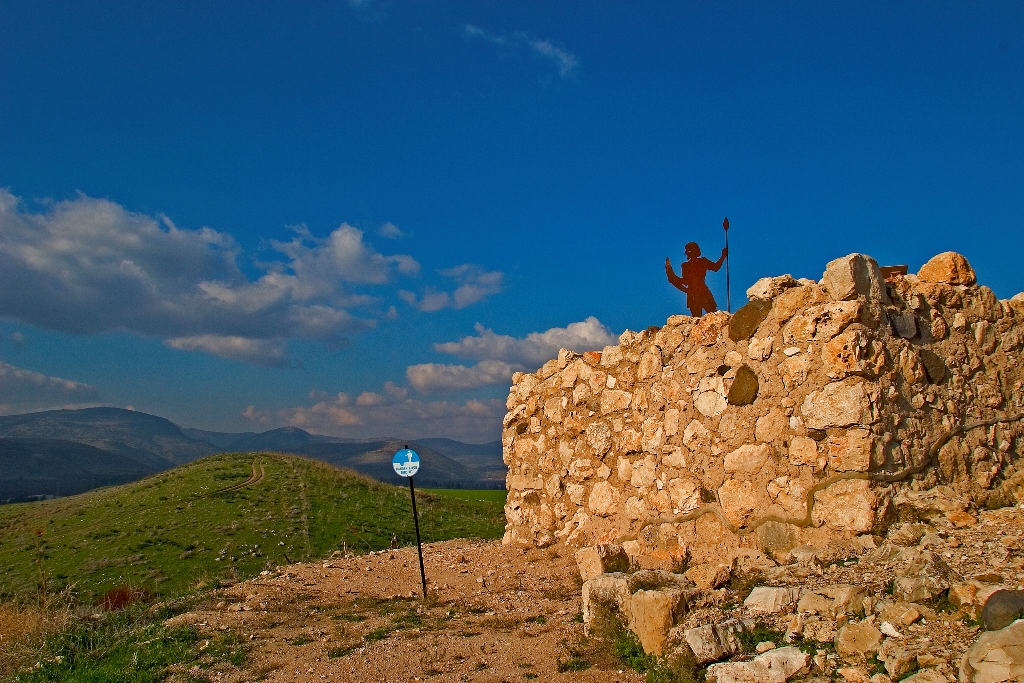
Tel Hazor National Park, Israel. Photo credit: © Doron Nissim. Published with permission of the Israel Nature and Parks Authority
Notable Archaeological Sites in IsraelIf you have more than a passing interest in archaeology and are prepared to veer off the beaten tourist track, we’d recommend visiting any one of these sites:
1. Beit Alpha - at the foot of the Gilboa mountains, this ancient synagogue was discovered in 1928. Archaeologists believe it was built in 6 CE and was once the center of a Byzantine Jewish village. Inside the building is an extraordinary mosaic floor, divided into three panels, all depicting different biblical themes, including the famous ‘Akedah’ (Binding of Isaac).
2. Beit Shean - first settled 6,000 years ago and continually inhabited since then, today it is one of Israel’s best-preserved archaeological sites. Today a national park, are remains of what was once a bustling Roman city, including baths, a basilica, craftsmen’s stores, and a Roman theater.
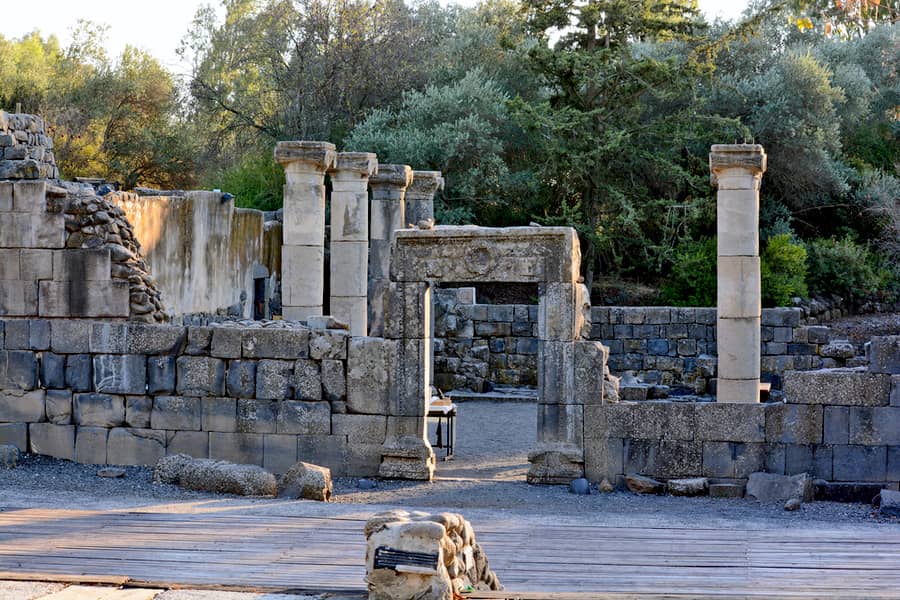
Synagogue of Katzrin, Golan Heights. Photo credit: © Shutterstock
3. Katzrin - this ancient village in the Golan Heights has, as its highlight, a synagogue, which was originally built in 4 CE and then again in 6 CE. Constructed facing Jerusalem, its entrance is topped by a lintel, featuring decorative carvings.4. Megiddo - Megiddo lies east of the Carmel Mountains and this ancient city overlooked the Via Maris trade route. Many civilizations came and went, all leaving behind traces of the cities and excavations have uncovered 26 layers of ancient settlements back to 7000 BCE!
5. Nimrod Fortress - at the foot of Mount Hermon, in the Golan, this fortress is the largest surviving medieval castle in Israel. It was built in a great rush, in just three years in fact, as a defense against the arrival of Kaiser Frederich II in 1227, as part of the Crusades.
Nimrod Fortress. Photo credit: © Dmitry Mishin
Israel’s Top Biblical Sites for Tourists
If you're visiting Israel and want to explore some of the many archaeological sites it has to offer, where should you begin or prioritize? To give you a better idea, take a look at the map of biblical sites in Israel below…And if you’re still stuck, here are a few of the must-see biblical sites which we believe belong at the top of the list, in terms of their beauty and sheer impressiveness.
The Galilee
Capernaum - the city where Jesus ministered and its synagogue. Archaeological digs have proved that the city was established in 2 BCE, during the Hasmonean period. Today, Capernaum is one of Israel’s most holy Christian sites, where visitors can explore the ancient synagogue where Jesus visited and walk in the same streets that he did.
Indeed, the whole area is steeped in history, from Nazareth, where Jesus lived as a child, to the Sea of Galilee, where he gave sermons, healed the sick, and recruited his disciples. Today, you can experience all this for yourself by hiking Israel’s Gospel trail, allowing you to walk in the footsteps of Jesus.
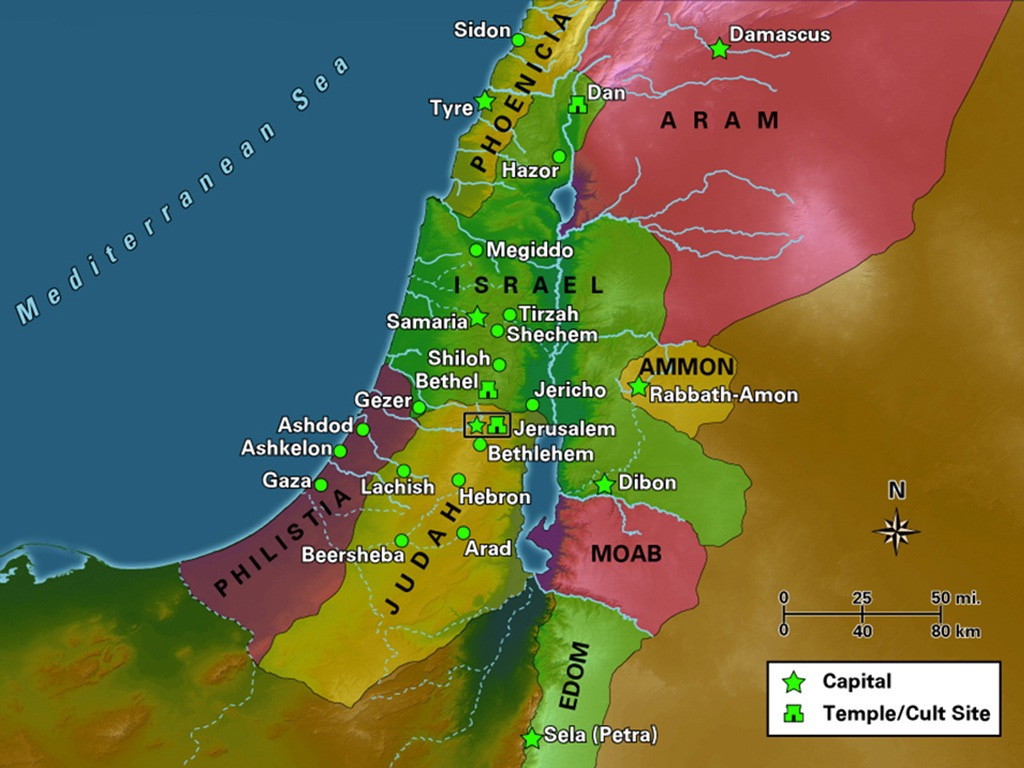
The map of the Kingdom of Judah and the Kingdom of Israel. This image is the copyright of the Society of Biblical Literature
Biblical sites in Jericho
King Herod’s Winter Palace - just 3 km from Jericho, this site was chosen by Herod for the building of a grand palace since it was a lush oasis in the desert (therefore had a water supply) but was also just a day’s travel from Jerusalem. Archaeologists discovered evidence of courtyards, swimming pools, and sunken gardens and the entire complex spanned the Wadi Qelt gorge (with a bridge connecting its different sections).
Biblical sites in Jerusalem
Tower of David / Citadel Museum - Situated close to the Jaffa Gate, leading into the Old City of Jerusalem, this ancient citadel (also known as the Tower of David) dates back to the Mamluk and Ottoman periods and some of its archaeological finds date back 2,500 years. Dan Bahat, an Israeli archaeologist who led excavations in 1971-1972 actually discovered that the citadel’s walls were built on the remains of a tower that protrudes three meters from the line of the wall.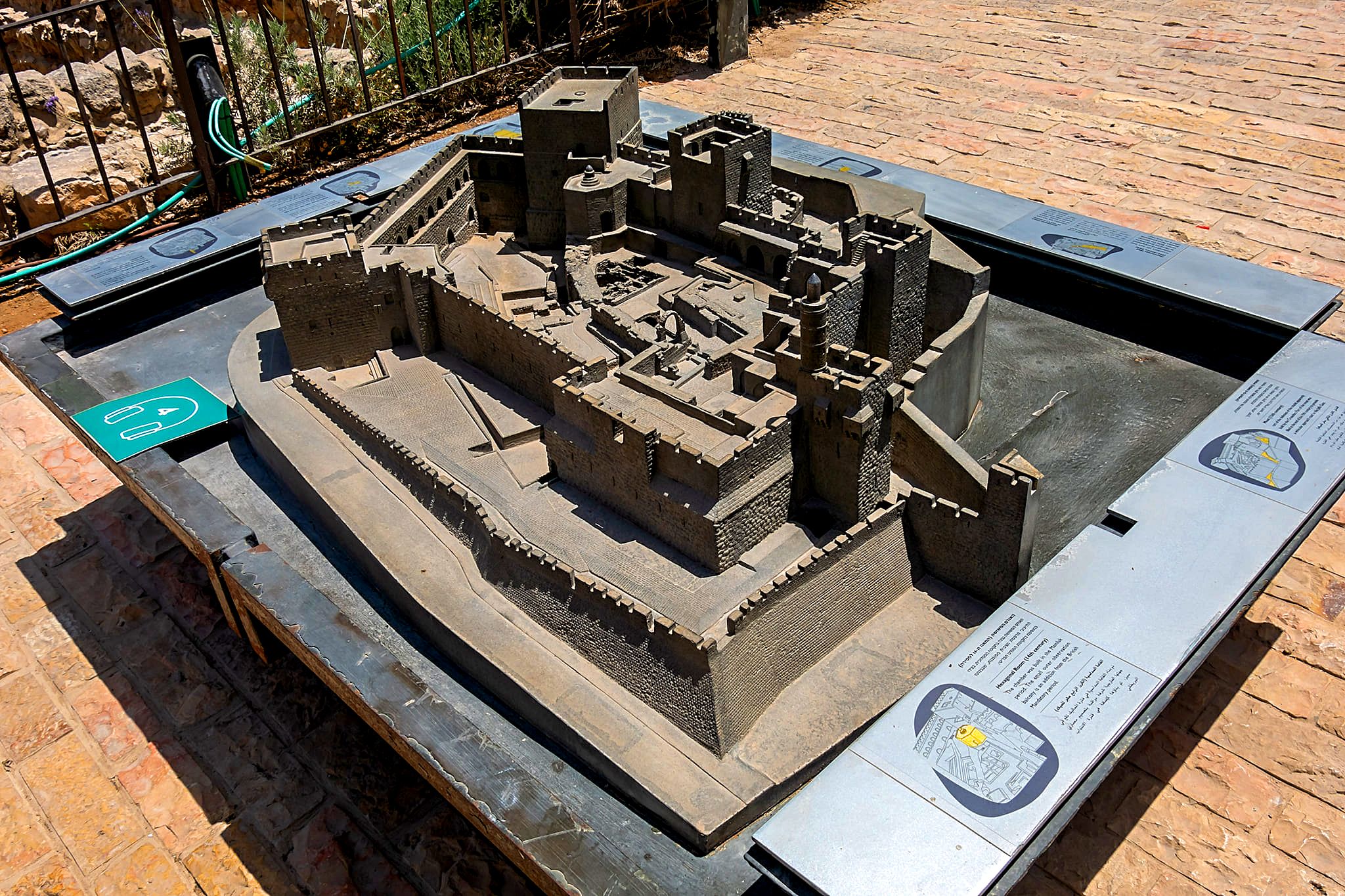
The 1:100 scale aluminum model of the Jerusalem Citadel, Tower of David Museum of the History of Jerusalem. Photo credit: © Dmitry Mishin
City of David - this world-famous site (and probably the most important archaeological site in Israel) can be found southwest of the Old City, under the Arab Village of Silwan. Many excavations have been carried out here, and all kinds of artifacts continue to be discovered on a regular basis.Considered to be the birthplace of Jerusalem, the City of David gives tremendous insight into the lives of people at the time of the First Temple. Ticket admission includes access to walls and fortifications of this holy city, including Hezekiah’s water tunnel. Carved out of rock, it brought water from the Gihon Spring to the Siloam Pool and helped Jerusalemites survive a siege by King Sennacherib of Assyria. A true feat of engineering.
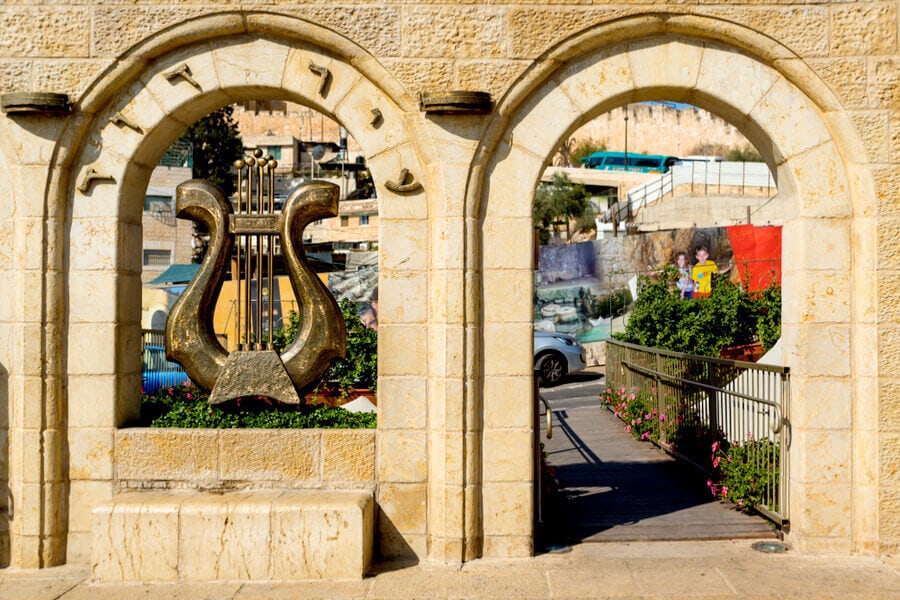
Entrance to the City of David, Jerusalem. Photo credit: © Shutterstock
Church of the Holy Sepulchre - the oldest and most famous church in the Old City of Jerusalem, this is the place Christians believe Jesus was crucified, buried, and resurrected. About 50 years ago, as part of a restoration project, excavations were carried out below the foundations, which led archaeologists to reconstruct a plan of the old complex.They realized it had four distinct quarters - the Cardo, the Basilica, the Holy Garden, and the Rotunda. A few years ago, the custodians of the church jointly agreed for renovations to be carried out, the first since 1947 actually. Since it’s such an enormous project, don’t be surprised if you see scaffolding and archaeologists peering at pillars and walls, when you visit there…
The Cardo - in ancient times, this was the main street in Ancient Rome, running from north to south and full of stores and craftsmen. Built by Emperor Justinian (527-565) it was a path that linked two main churches in this Byzantine period - the Nea Church and the Church of the Holy Sepulchre.
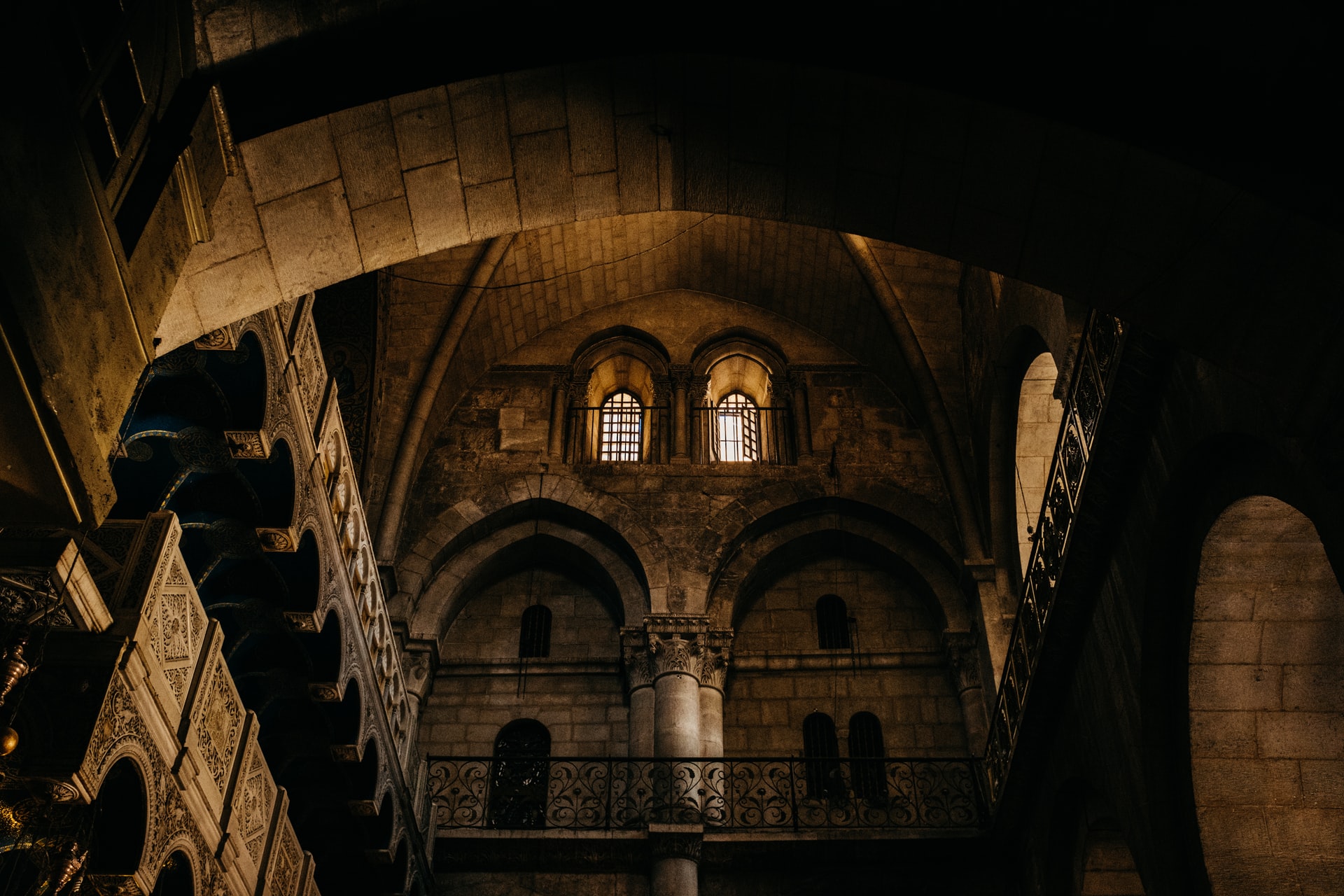
Church of the Holy Sepulchre, Jerusalem, Israel. Photo by Adam Kring on Unsplash
Actually, historians originally believed the Cardo was constructed by Hadrian, but excavations carried out between 1971-1981 under Nahman Avigad uncovered many architectural features that gave scholars the idea that Hadrian could not have been behind the architecture.The Western Wall Tunnels - the Western Wall of the Temple Mount is one of Jerusalem’s most iconic sights - it’s also the last remnant of the Second Temple, destroyed 2,000 years ago. Many people, however, do not realize what lies beneath - tunnels, which were first excavated in the 19th century and run for 488 meters, where you can see a large part of the wall which is hidden from view when above ground.
The real digging, however, began after the Six-Day War in 1967, when Israel captured the Old City of Jerusalem. The Western Wall Tunnels are full of extraordinary archaeological findings, including water pits, an ancient aqueduct, and huge stone arches. Painstaking work means you can walk through parts of this original site, which dates back to the first century.
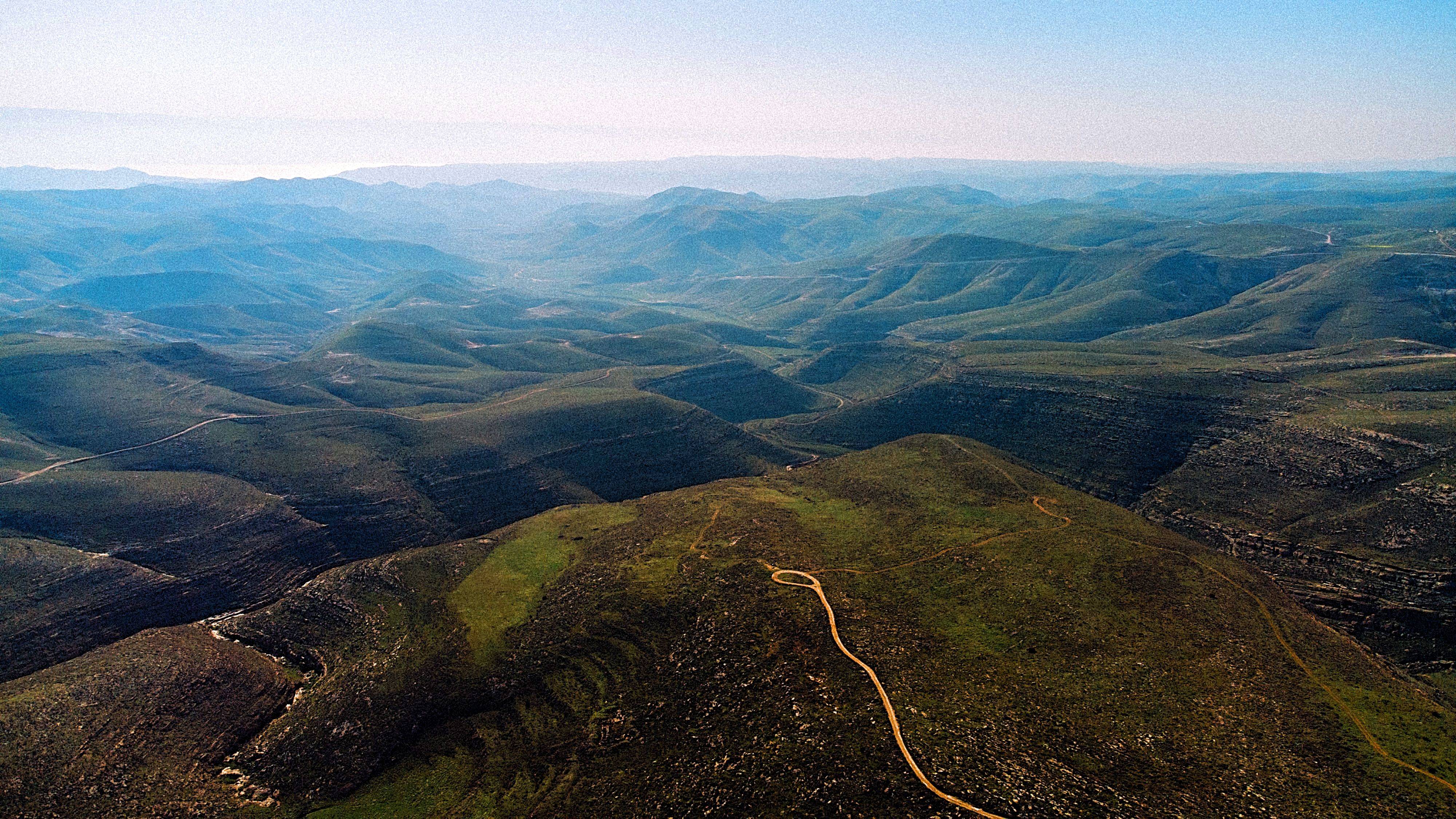
Aerial view of Judean Desert, Israel. Photo by Daniel Newman on Unsplash
Biblical sites in the Judean Desert
Masada - overlooking the Dead Sea and situated in the Judean desert. Built by King Herod of Judea, Masada is one of Israel’s top tourist attractions. It was excavated extensively between 1963-1965 by a team led by Yigal Yadin, an Israeli archaeologist, and former soldier. Since it was so remote, they concluded that it had remained mainly untouched for two millennia.
Today you can walk up its snake path or take a cable car to the top, at which you’ll get an idea of the daily lives of the people who lived there. Rather than discovering luxurious items, the team found cooking pots, urns for collecting wine, bathhouse structures, and even a bakery. Excavations continue even today.
If you’re curious about any of these sites and want to delve into their histories, don’t hesitate to contact us - we offer both private tours and tour packages to many of the spots mentioned in this article.
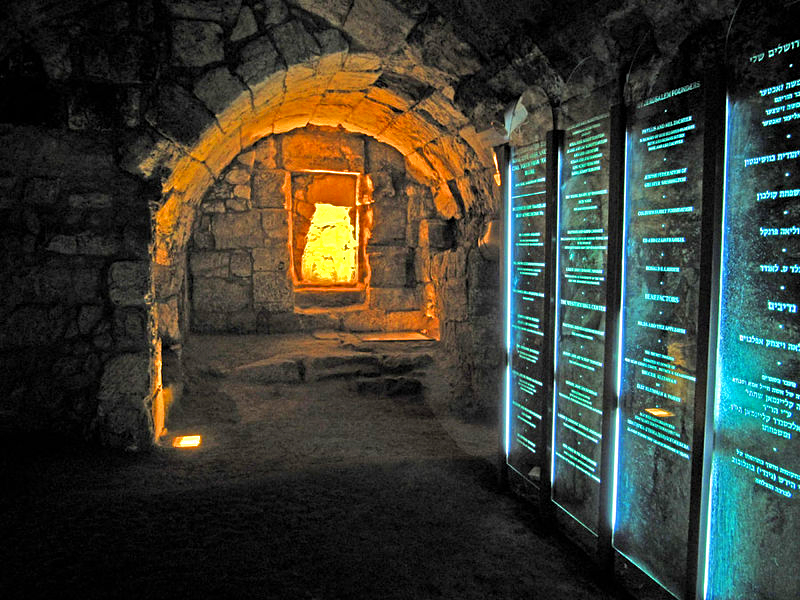
Western Wall Tunnels, Jerusalem. Photo credit: © Shutterstock
 Login / Register
Login / Register
 Contact Us
Contact Us
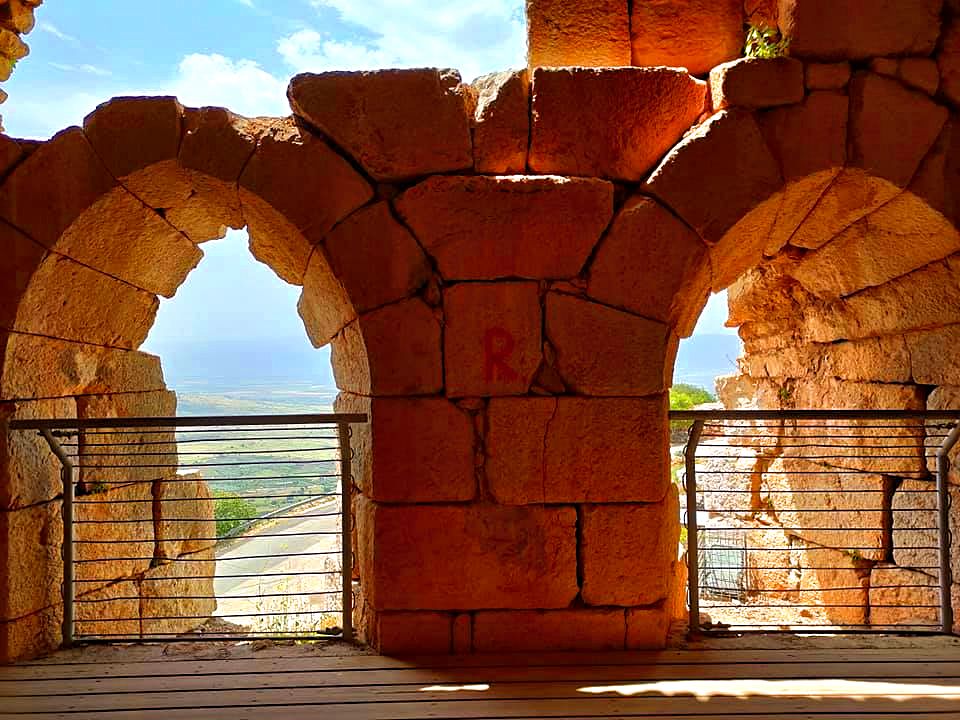
 Certificate of Excellence
Certificate of Excellence Guaranteed Departure
Guaranteed Departure Low Prices Guaranteed
Low Prices Guaranteed 24/7 Support
24/7 Support




